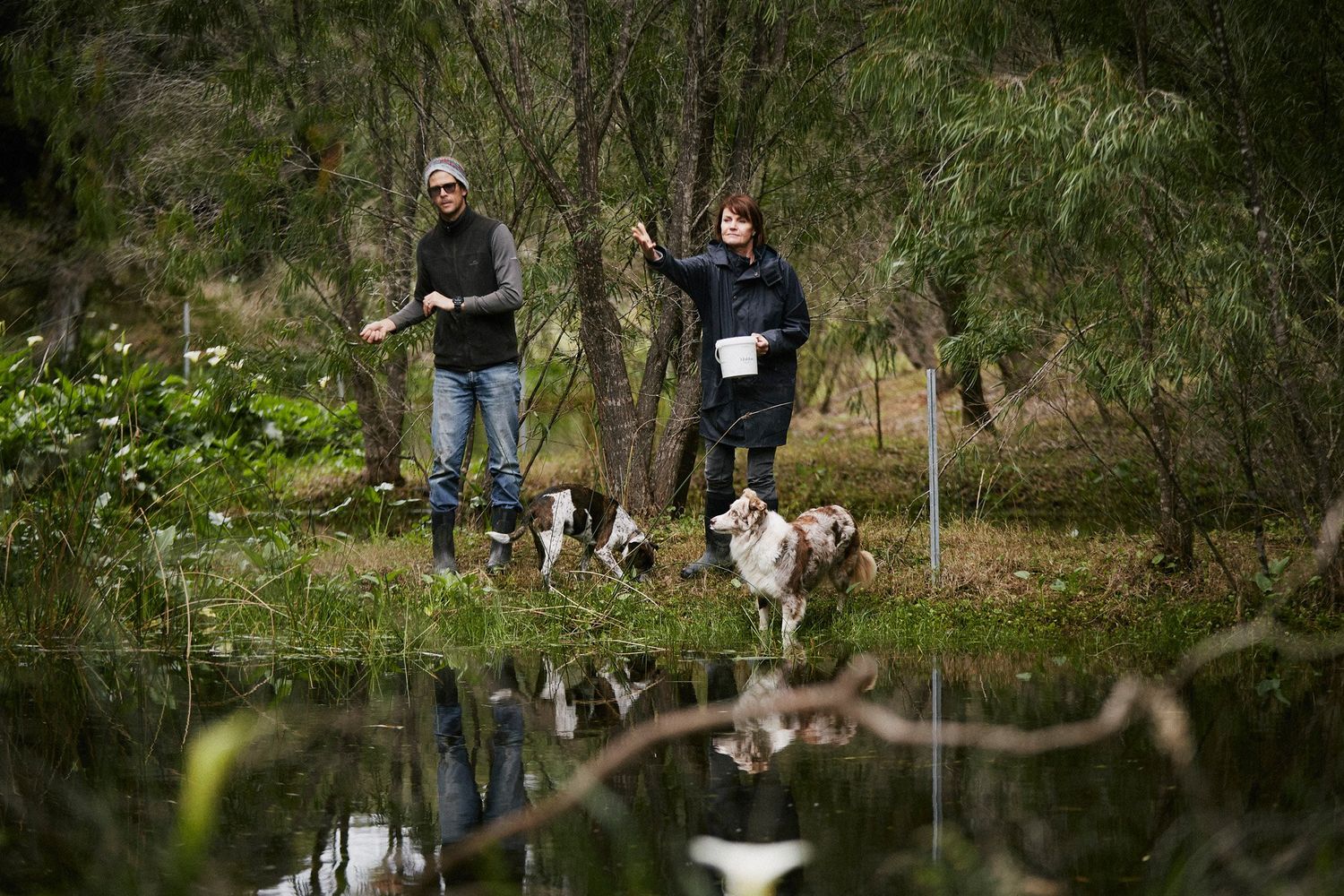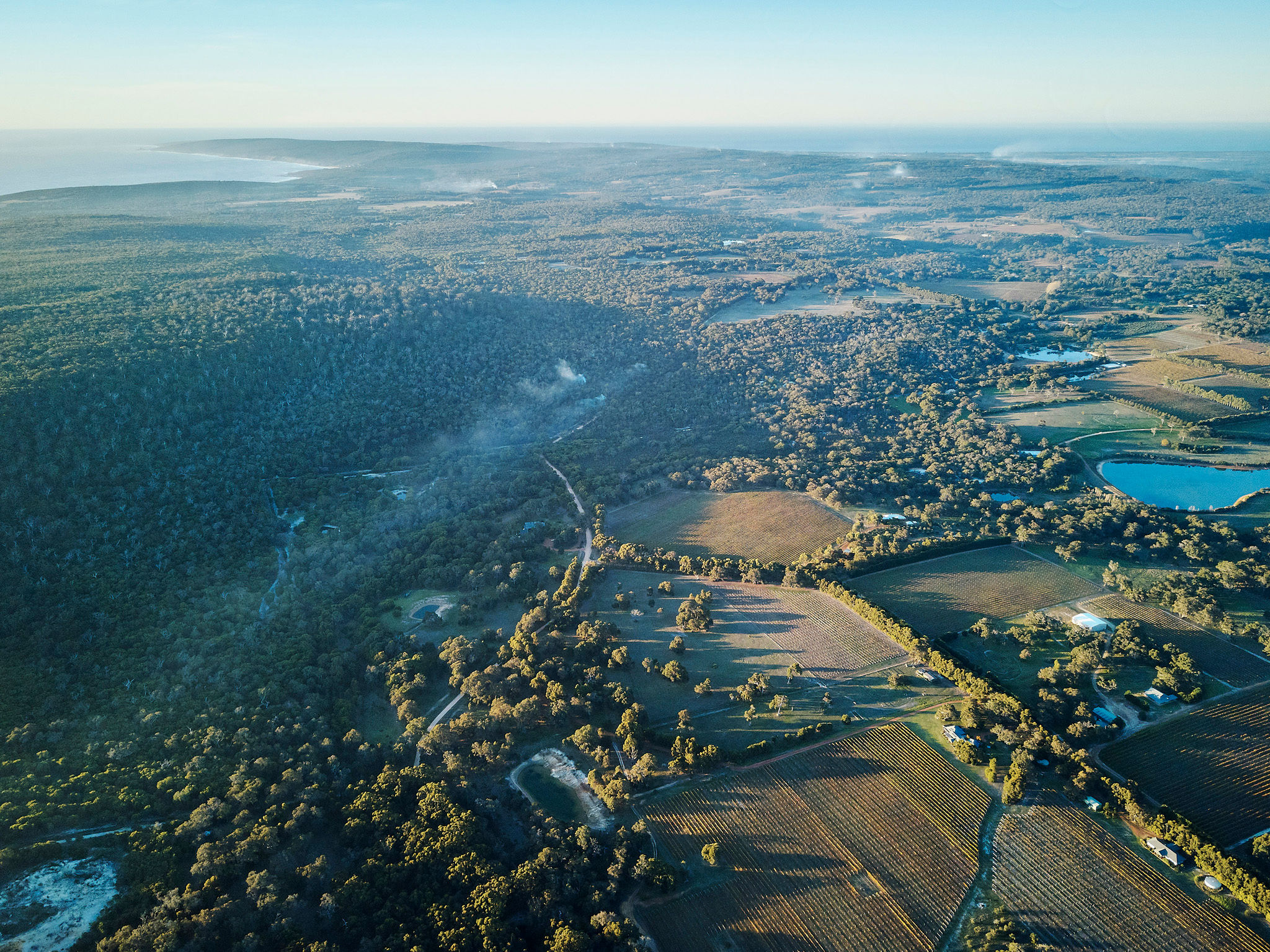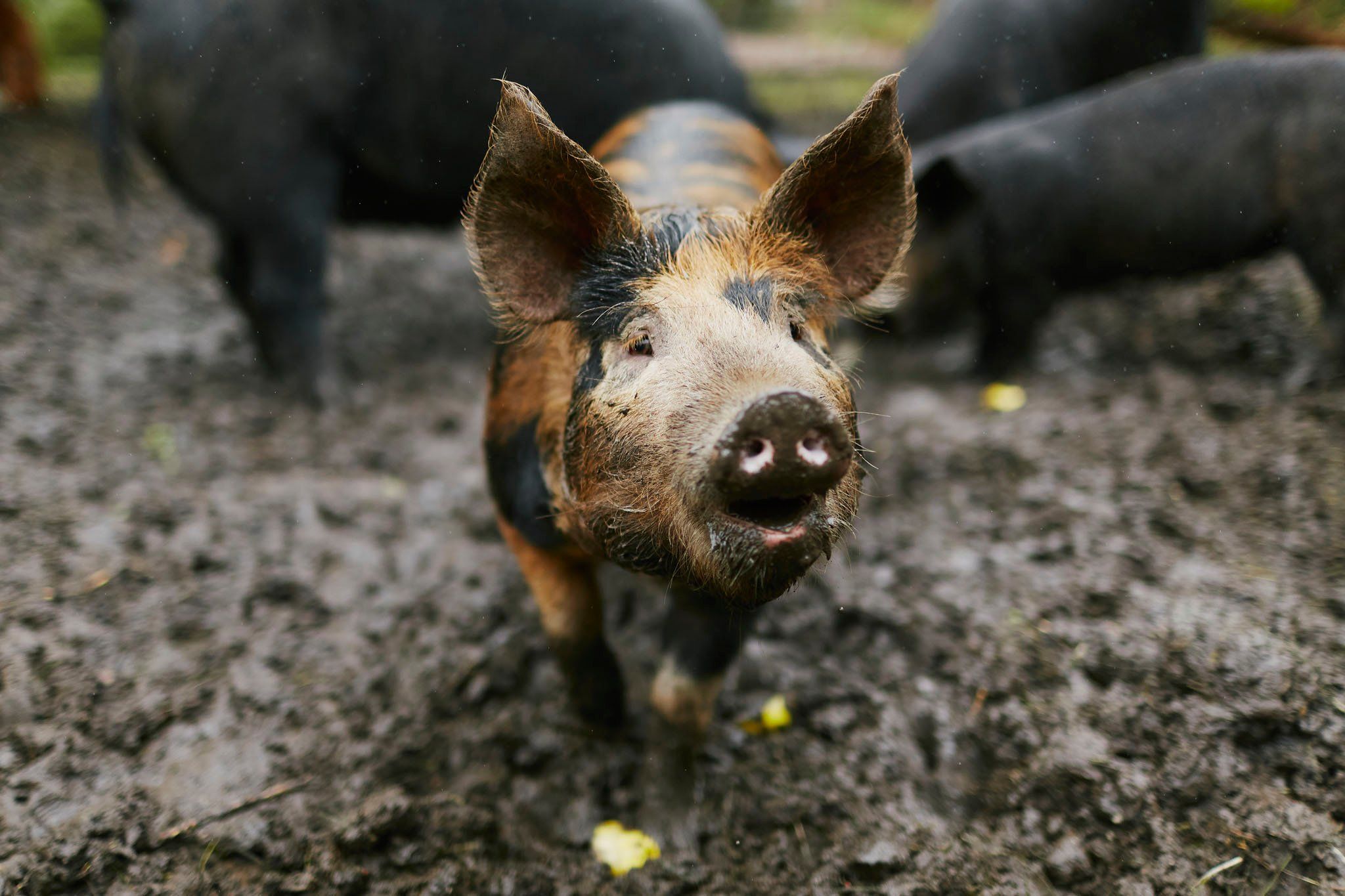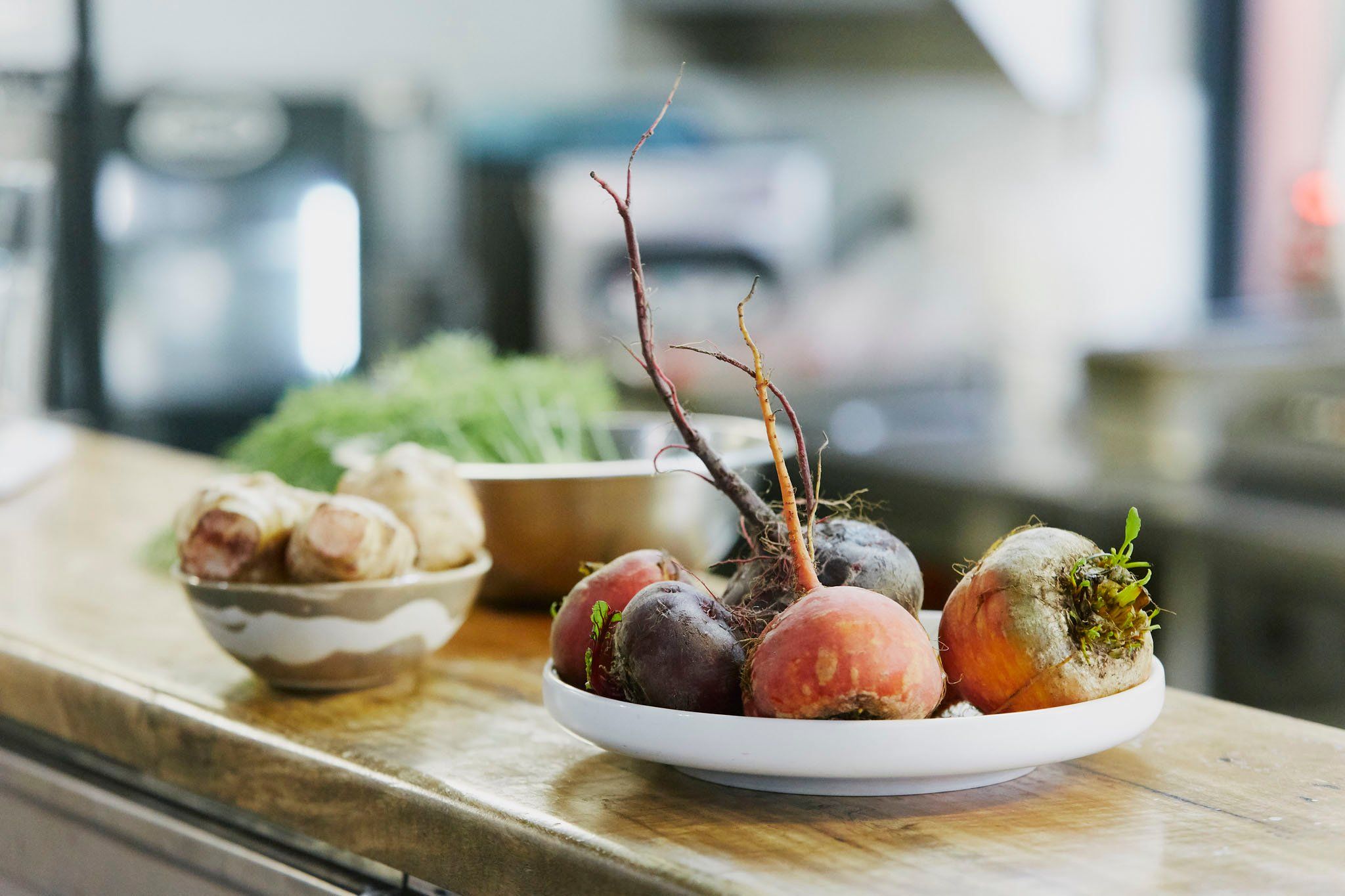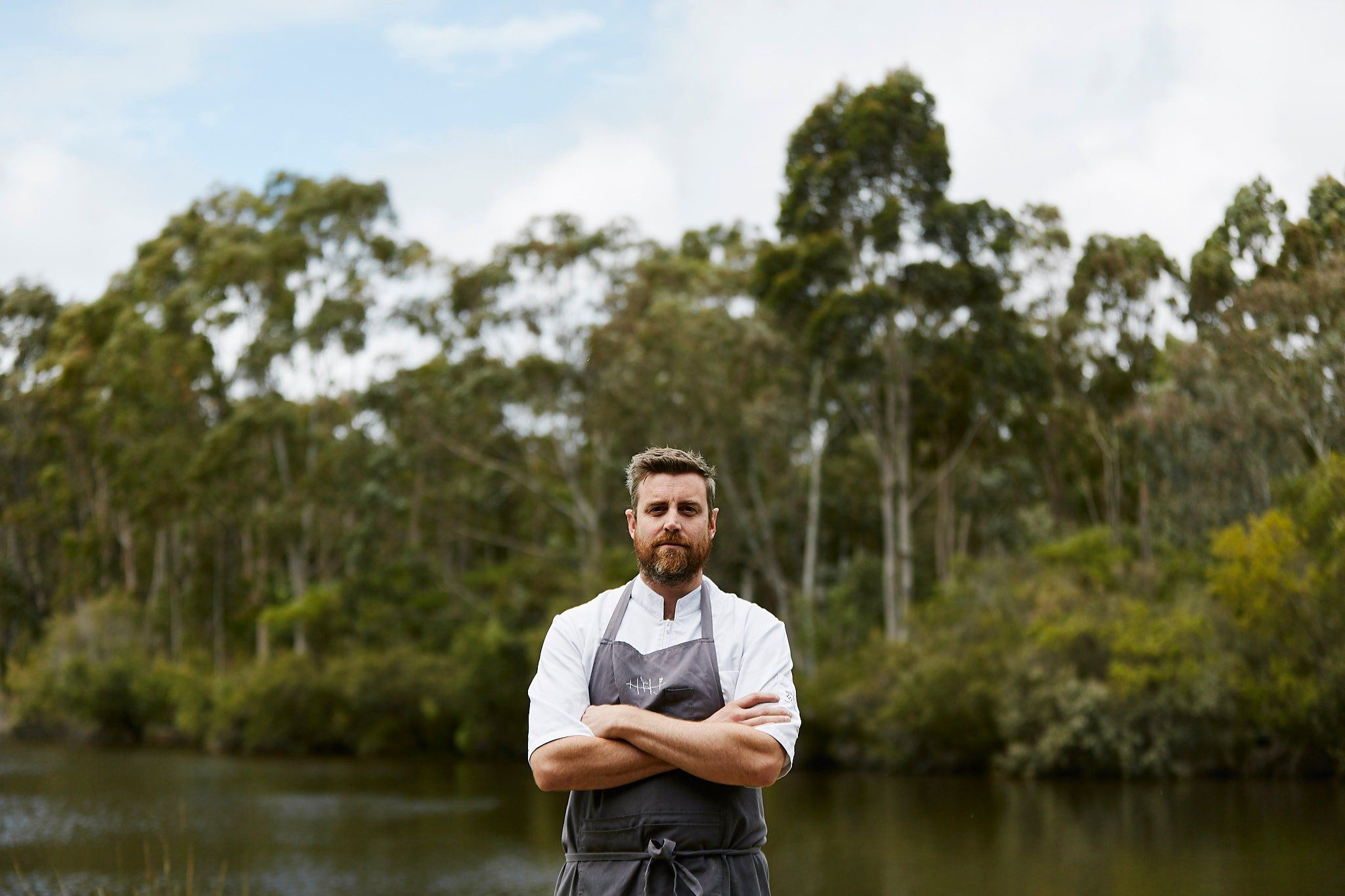One place in the Margaret River Region where the onset of winter is relished more than most is Arimia, an almost entirely self-sufficient vineyard, working farm, and restaurant set in the charming back blocks of Wilyabrup.
Winter rains are life-blood to Arimia. They nourish plenty of winter produce; a few hundred olive and fruit trees and one-acre vegetable garden. Any run off trickles into a winter creek line from which Arimia farm their own trout. Of course, the rain also supplies their livestock, and restaurant clients and staff, with enough drinking water for the year.
‘Sustainable’ and ‘local’ might be buzzwords, but Arimia is one place you’ll find genuine commitment to the practice of growing and serving food from their own backyard.
